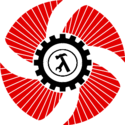Aux root: Difference between revisions
No edit summary |
No edit summary |
||
| Line 7: | Line 7: | ||
} | } | ||
</script></html> | </script></html> | ||
<div style="background-color: grey; color: white;"> | <div style="background-color: grey; color: white;"><div style="position: relative;top:50px;left:700px;width:800px;> | ||
Domain space (DS) is just the regular public internet with an added top level domain 'dom' which operators use to establish their control of overall name space. As used here, '''alt roots''' refers to a peerage of autonomous operators routing TLDs upon their discretion. The default in core domain space is all ICANN/IANA TLDs plus one but other operators may choose something else. Since the public roots are not in general being overridden, we use the term "Aux(lliary) root". | |||
</div> | |||
<div style="position: relative;left: 40px;text-align: left;width: 600px;"> | <div style="position: relative;left: 40px;text-align: left;width: 600px;"> | ||
<span style="position: relative;left: 5px;> [[File:KASTALIEN.svg|left|thumb|125px|<html><a onclick="return checkRouting();" href=http://sameboat.dom>Go There</a></html>]]</span> | <span style="position: relative;left: 5px;> [[File:KASTALIEN.svg|left|thumb|125px|<html><a onclick="return checkRouting();" href=http://sameboat.dom>Go There</a></html>]]</span> | ||
| Line 15: | Line 17: | ||
style="background-color: navy; color: silver;"> KASTALIEN </span>]] | style="background-color: navy; color: silver;"> KASTALIEN </span>]] | ||
<span style="font-size: 12px;background-color: gainsboro; "> [[:en:Rectification of names| peer-peer name system ]]</span>¹</h3><br><center><span style="background-color: darkslategray;color: white;"> Aux-rooted: private name spaces supplement the public one. <ref> see [[:en:Alt root|<span style="color: pink;">Alt root</span>]]</ref></span></center> | <span style="font-size: 12px;background-color: gainsboro; "> [[:en:Rectification of names| peer-peer name system ]]</span>¹</h3><br><center><span style="background-color: darkslategray;color: white;"> Aux-rooted: private name spaces supplement the public one. <ref> see [[:en:Alt root|<span style="color: pink;">Alt root</span>]]</ref></span></center> | ||
</div> | </div> | ||
<blockquote> | <blockquote> | ||
<html> | <html> | ||
Revision as of 08:59, 7 July 2022
Domain space (DS) is just the regular public internet with an added top level domain 'dom' which operators use to establish their control of overall name space. As used here, alt roots refers to a peerage of autonomous operators routing TLDs upon their discretion. The default in core domain space is all ICANN/IANA TLDs plus one but other operators may choose something else. Since the public roots are not in general being overridden, we use the term "Aux(lliary) root".
.dom
Domain Engineering TLD
KASTALIEN peer-peer name system ¹
Any IANA .dom TLD wouid be overriden in this scheme. To add core domain space (my version of .dom): add 1 or more of these name servers ( or their addresses ) to your active resolver(s):
- ns.<LINKING_ZONE>
- . . .
- ns<n-1>.<LINKING_ZONE>
where<LINKING_ZONE> ::= <DS_ZONE>.<IANA_ZONE> A linking zone is a bridge from the public name system, n in <n-1> is currently 2 and
the zone rotations are
<LINKING_ZONE> Epoch Vendor <DS_ZONE> <IANA_ZONE> 'ai-integration' 'biz' 2005-03 — 2025-02 Neustar 'meansofproduction' 'biz' 2006-11 — 2024-10 Neustar 'meansofproduction' TBA 2024-07-14 TBA 'mecha.dom' split from aii.biz N/A 2023-01-01 N/A 'sameboat' 'live' 2017-11 — 2022-11 Donuts 'sameboat' 'network' 2022-05 — 2027 Donuts 'sameboat' 'live' 2022-08 — N/A
- Suffixes which are dropped for general public use may still be routed for private purposes*
The rotating linking zone is the distinguishing feature of my alt root concept which otherwise is ordinary DNS/EPP. Although the facilities provided by overlaying services may obscure this fact it's essential to interoperability of private domain spaces with the public internet.
A compromise between stability and flexibility/independence from the priced system is struck by rotation of a IANA TLD and a period of dual routing of the old and new during the rotation.
Canonical mappings from public (IANA) name space into a private domain space are to simply drop the IANA TLD, replace it by .dom or one designated for use in private spaces (which can be the same to replace the whole TLD).Names only routed in a domain space lack an IANA suffix (or equvalently use .dom) and are not affected by linking zone rotation.
Operators manage impact if any in their domain spaces across linking zone rotations, including determining their own epoch duration policies, above are for core domain space.
* An example is thoughtcrime.biz, thoughtcrime.dom is already the reference domain but tcb.biz will route publicly for a while and then only via my root for the .biz suffix.
Paid²[2]users have access from recursion and additional basic name services for users below developer class up to continuous live maintenance by intelligent agency for operators.
As used here, the background operation of the public priced name systems are assumed as needed, excluded where desirable, e.g. for privacy or security. Our system is constructed using the standard unix networking software and forms a superspace of the public name system with these properties:
- Individual operators of the system determine which TLDs they recognize. The system administered here only allocates the TLDs FCFS to operators, it doesn't have the intent of acting as a sole authoritative source even for the .dom name, which operators may override to establish cooperating alt roots. The TLD operators in essence agree to a common real TLD space which they may present internally differently, but which starts with the common public systems plus a single reserved name: ".dom" for their private/peer namespace.
- IPV6 and TLS are defaults, 4 and plain text special cases.
- Simple name seeking registrars are prohibited. Registrars must offer the name service free bundled with value added services.
- A rich default common systems application environment which operators may optionally use is provided in which all users are identified and at least in principle, traceable.
An equivalent function is assumed for peer operators, as provided by my DNS/EPP tooling merged with the FRED Czech NIC software as maintained by me for my Ubuntu LTS targets. End users of the "sameboat/C-六" core PHP-Python CMS have significant consumer level DNS functionality upon sufficient entitlement.
³ "clean" means a newly formatted host OS instance; Our modifications of various elements such as letsencrypt included in the SaaS, woven through various process such as SSO, registration, etc.




